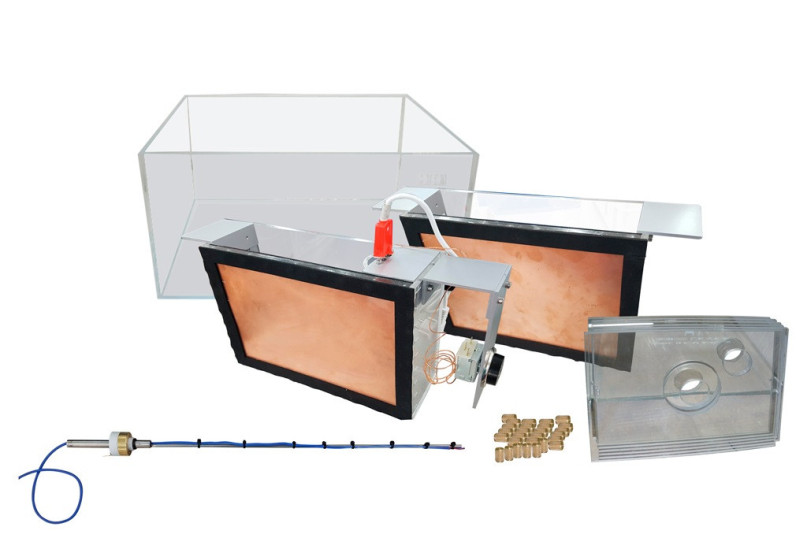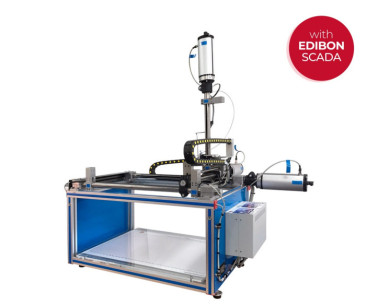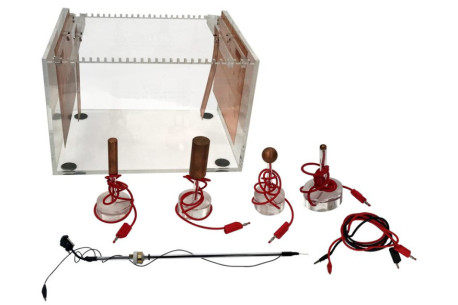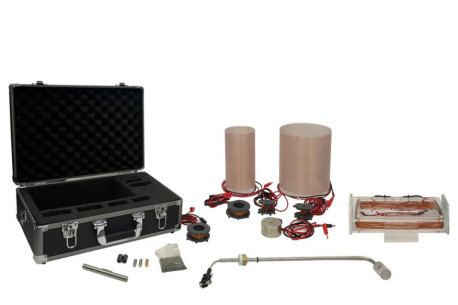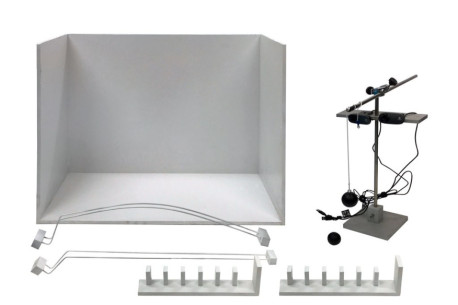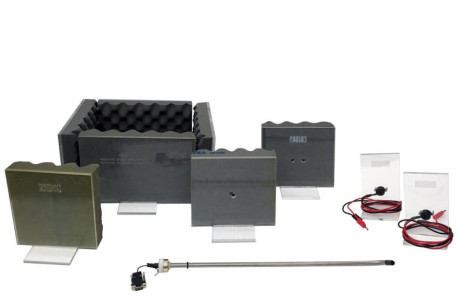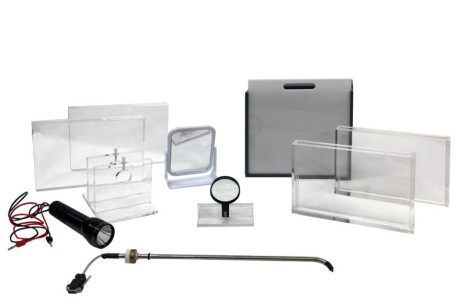FTT Набор для изучения термодинамики
ИННОВАЦИОННЫЕ СИСТЕМЫ
The Set for the Study of Thermodynamics, "FTT", allows the study of thermodynamics by means of the temperature difference between two sources.
Расширения
ЛАБОРАТОРИИ
НОВОСТИ ПО ТЕМЕ
ОБЩЕЕ ОПИСАНИЕ
The Set for the Study of Thermodynamics, "FTT", allows the study of thermodynamics by means of the temperature difference between two sources.
Thermodynamics represents the study of temperature, heat and energy exchange. It has practical applications in all branches of science and technology, as well as in many aspects of daily life, from climate to cooking.
Temperature is familiar to all of us as a measure of how hot or cold bodies are. More precisely, it is a measure of the average internal molecular kinetic energy of a body, but both the definition and determination of temperature is a subtle and complex subject. For example, it is very difficult to define temperature so that different thermometers agree with each other in measuring the temperature of a substance. However, the properties of gases at low densities allow us to define a temperature scale "T" and to construct gas thermometers whose measurements agree.
The transmission of energy from one body to another in a heat exchange process consists simply in the absorption of energy at the molecular level. This energy causes its atoms to increase their degree of excitation, increasing their oscillations in frequency and amplitude. These oscillations, which occur around their equilibrium positions, can even "break" bonds between them, which then become free, causing the element to change its state of aggregation.
At the macroscopic level, temperature translates into the sensation of heat: when we touch an object that is at a higher temperature than that of our skin, we say that it is hot. The temperature difference between two substances will determine the direction of heat flow between them. It is this difference in heat flow that we can study with the Set "FTT".
УПРАЖНЕНИЯ И ПРИМЕРЫ С ИНСТРУКЦИЯМИ
РУКОВОДСТВО ПО ПРАКТИЧЕСКИМ УПРАЖНЕНИЯМ ВКЛЮЧЕНО В РУКОВОДСТВО ПОЛЬЗОВАТЕЛЯ
Level 2:
- Determination of temperature distribution in a water tank.
- Temperature distribution in the presence of hot and cold focus. Dependence on the temperature difference.
- Temperature distribution in the presence of a hot and a cold source. Dependence with the distance between them.
- Temperature distribution in the presence of hot and cold sources. Dependence on their position and geometry.
IMPORTANT: The teacher can use his own elements, so these practical possibilities are NEARLY UNLIMITED.
БОЛЬШЕ ПРАКТИЧЕСКИХ УПРАЖНЕНИЙ ДЛЯ РАБОТЫ С УСТРОЙСТВОМ
- Many students view results simultaneously. To view all results in real time in the classroom by means of a projector or an electronic whiteboard.
- Open Control, Multicontrol and Real Time Control. This unit allows intrinsically and/or extrinsically to change the span, gains, proportional, integral, derivative parameters, etc, in real time.
- The Computer Control System with SCADA allows a real industrial simulation.
- This unit is totally safe as uses mechanical, electrical/electronic, and software safety devices.
- This unit can be used for doing applied research.
- This unit can be used for giving training courses to Industries even to other Technical Education Institutions.
- Control of the FTT unit process through the control interface box without the computer.
- Visualization of all the sensors values used in the FTT unit process.
- Several other exercises can be done and designed by the user.
ДОПОЛНИТЕЛЬНОЕ ОБОРУДОВАНИЕ
Набор для изучения электрических полей
Набор для изучения магнитных полей
Набор для изучения механики
Набор для изучения акустики
Набор для изучения оптики
КАЧЕСТВО

ПОСЛЕПРОДАЖНОЕ ОБСЛУЖИВАНИЕ

 Настройки cookie
Настройки cookie

